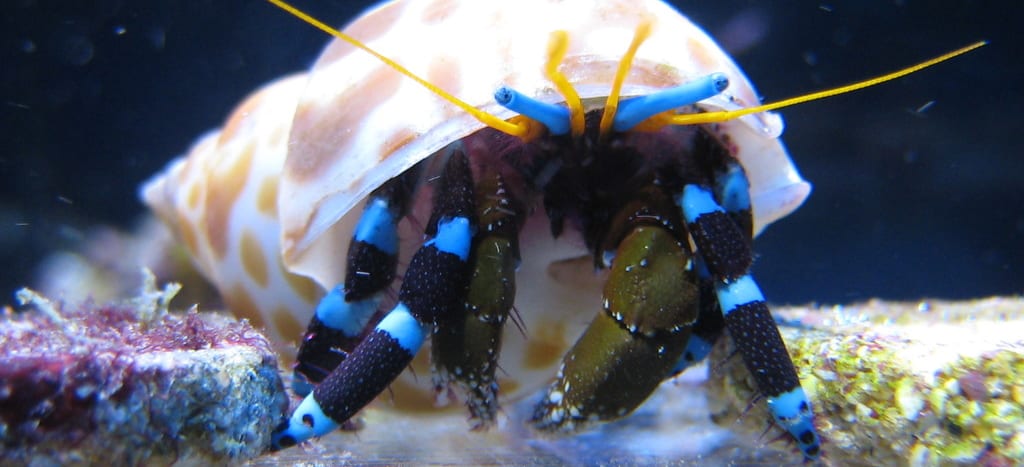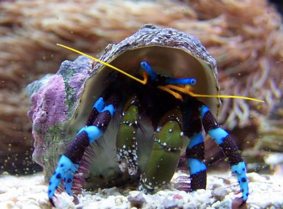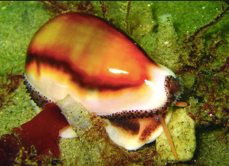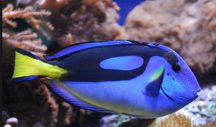If your tank has a lot of algae in it, don’t fear! There are some lovely little algae eaters out there that can make a great addition to your tank while taking care of your algae problem. These creatures consume different types of algae including red slime algae (cyanobacteria), green hair algae, microalgae, and macroalgae. Also, take note as to how much algae you have in your tank because some of these algae eaters require more algae than others.
3 Algae Eaters for your Saltwater Fish Tank
 Dwarf Blue Leg Hermit Crab Are Great Algae Eaters
Dwarf Blue Leg Hermit Crab Are Great Algae Eaters
The Dwarf Blue Leg Hermit Crab can help snap most tanks into shape because they eat all types of algae. If you have an algae problem and not much room in your tank to add a bunch of algae eaters, try adding a dwarf blue leg hermit crab as they only grow to be an inch long. They spend most of their time crawling over rocks and sifting through sand, which provides extremely valuable aeration. Just make sure that if you have multiple each has its own shell because if they outgrow their own and there is no other shells available; they will kill another hermit crab for its shell. Here is a video that gives some good insight as to what it takes to care for a Dwarf Blue Leg Hermit Crab.
An alternative to this hermit crab is the Dwarf Red Tip Hermit Crab which eats mostly cyanobacteria as well as any food they can scavenge. These two breeds of hermit crabs should be fed seaweed if there is an insufficient amount of algae to feed them.
 Chestnut Cowrie Snail Grazes on Algea
Chestnut Cowrie Snail Grazes on Algea
Tanks with lots of live rock make great homes for Chestnut Cowries. They will keep your aquarium clean by eating the algae and diatoms. Since they are native to the deeper waters of Southern California, they thrive in colder temperatures that are kept around 60 degrees Fahrenheit. Although they are herbivores, be aware that they may attempt to eat soft corals so check your tank for compatiblity before purchasing.
 Algea is a Main Diet for the Pacific Blue Tang
Algea is a Main Diet for the Pacific Blue Tang
Pacific Blue Tang’s are a solid go-to for tanks that hold at least 100 gallons. It is crucial that they have enough space because they are highly active and adults will fight if they don’t have enough room. However, they also need a few hiding places to make them feel comfortable. In addition to eating algae, they also need to be fed some shrimp. They need to be fed more if there is not an adequate amount of algae. For more information on how to care for a blue tang, this video is extremely helpful!
Other algae eaters worth considering include:
- Lawnmower Blenny
- Tailspot Blenny
- Dwarf Angels





















